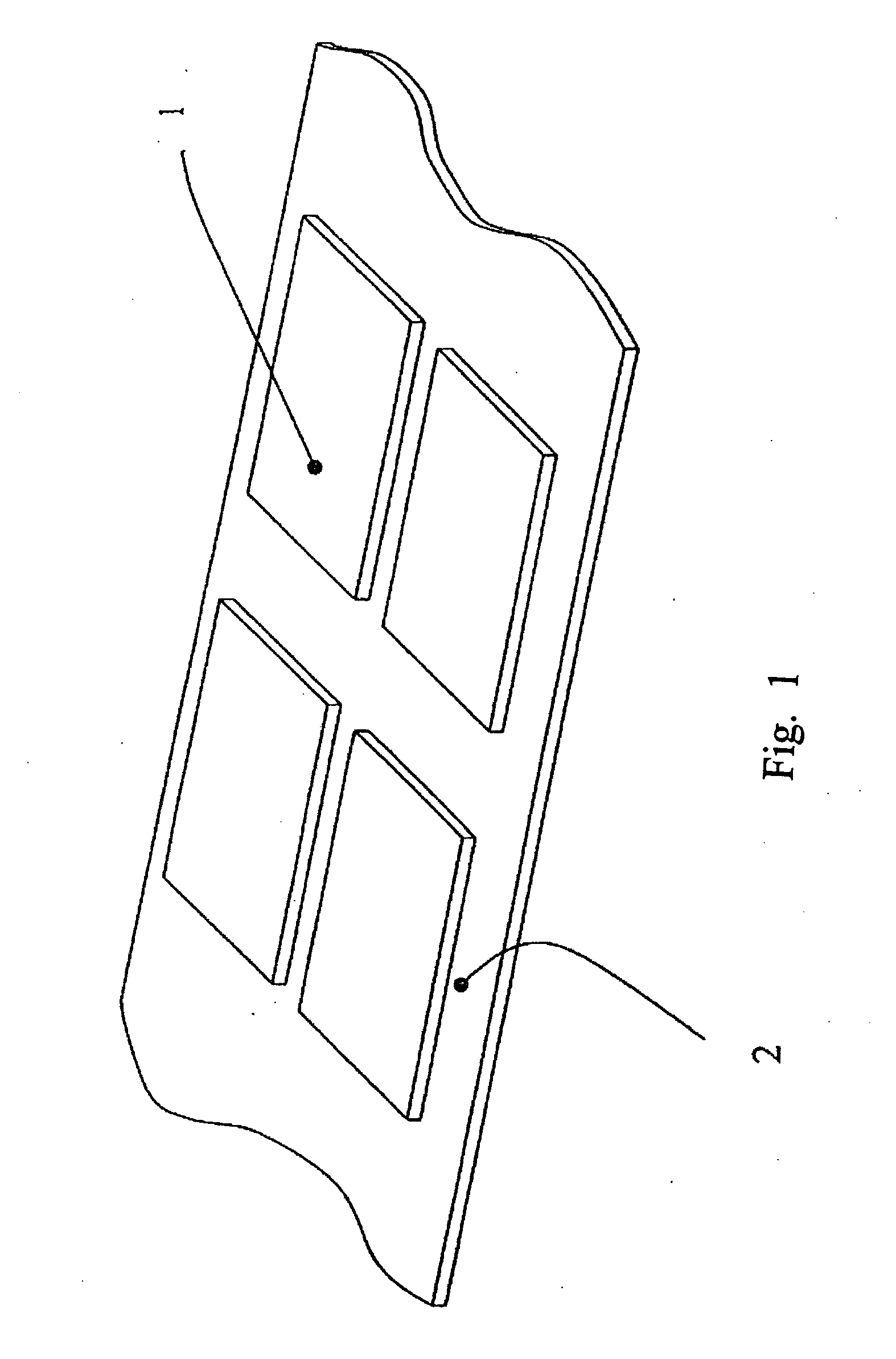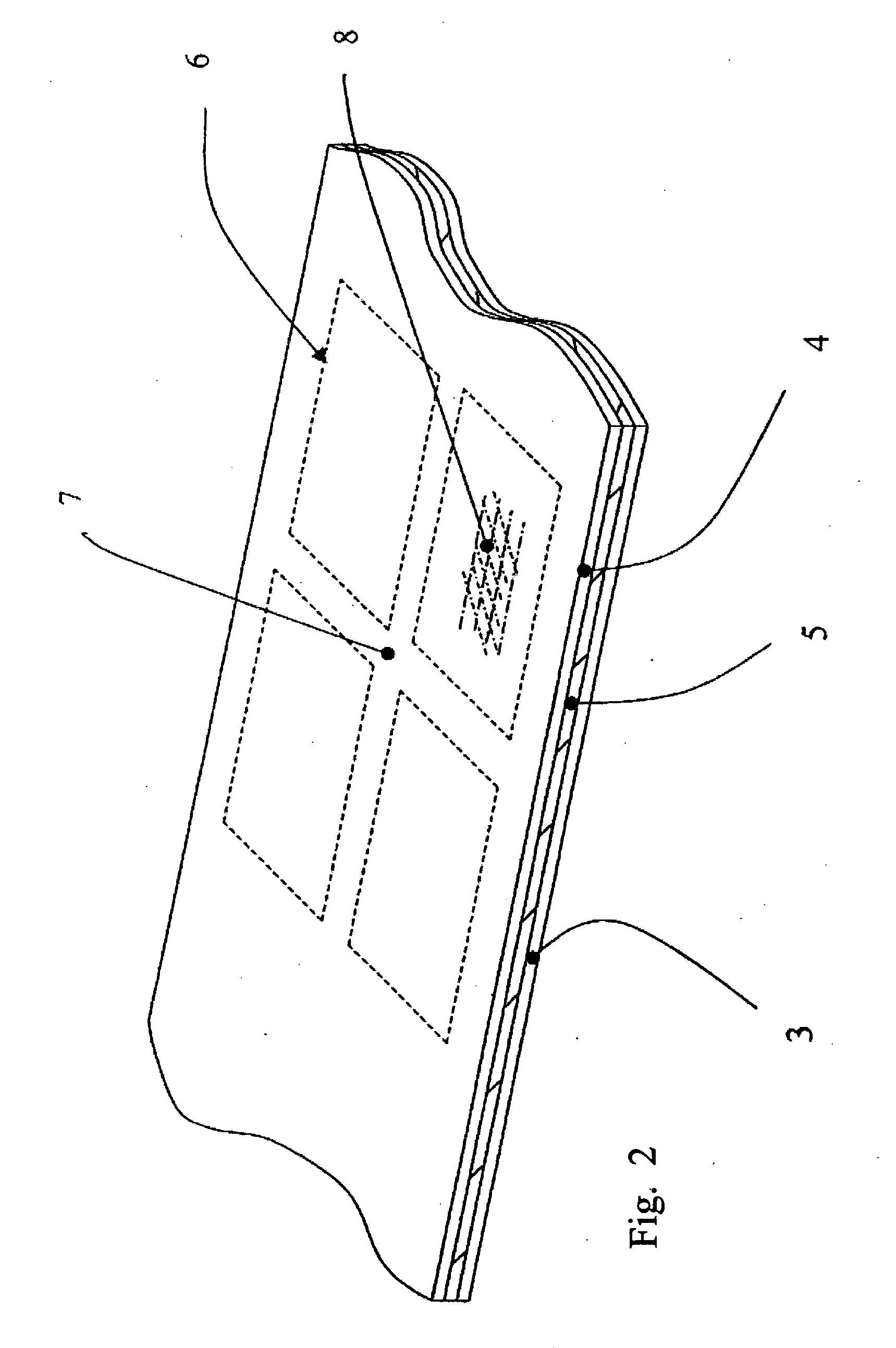Labels and method of manufacture thereof
- Summary
- Abstract
- Description
- Claims
- Application Information
AI Technical Summary
Benefits of technology
Problems solved by technology
Method used
Image
Examples
Embodiment Construction
[0049]FIG. 1 shows a base carrier label, which has been formed on a continuous carrier substrate 2 and held in place using a suitable pressure sensitive adhesive. Multiple labels are provided across the width of the carrier substrate 2 (with two labels being illustrated in FIG. 1) with the configuration being repeated down the length of the carrier substrate 2. The top surface of the carrier substrate 2 may be coated, for example with a silicone material, to form a release sheet from which the carrier labels 1 can be easily removed.
[0050] The carrier labels 1 may have previously been formed by cutting the shape of the labels from the upper layer of a typical multi-layer pressure sensitive label substrate stock such as shown in FIG. 2. The stock would normally comprise a paper carrier layer 3 with an appropriate silicone or wax release surface, a plastic (typically Polyethylene {PE}, Polypropylene {PP}, Polyester {PET}, Polyvinyl chloride {PVC}) or paper upper layer 4 and pressure s...
PUM
| Property | Measurement | Unit |
|---|---|---|
| Length | aaaaa | aaaaa |
| Adhesivity | aaaaa | aaaaa |
| Width | aaaaa | aaaaa |
Abstract
Description
Claims
Application Information
 Login to View More
Login to View More - R&D
- Intellectual Property
- Life Sciences
- Materials
- Tech Scout
- Unparalleled Data Quality
- Higher Quality Content
- 60% Fewer Hallucinations
Browse by: Latest US Patents, China's latest patents, Technical Efficacy Thesaurus, Application Domain, Technology Topic, Popular Technical Reports.
© 2025 PatSnap. All rights reserved.Legal|Privacy policy|Modern Slavery Act Transparency Statement|Sitemap|About US| Contact US: help@patsnap.com



